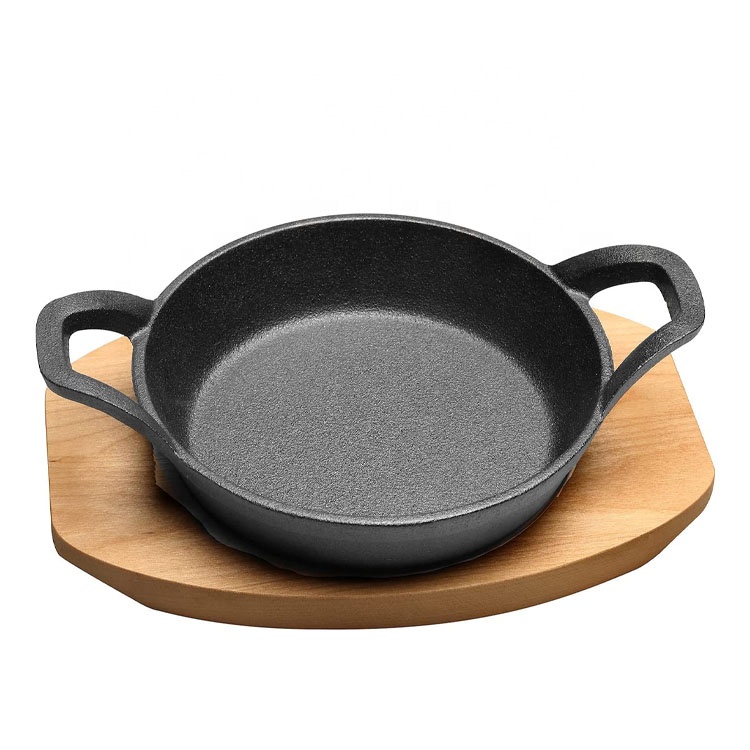
cheap cast iron vs expensive
Cheap Cast Iron vs. Expensive Cast Iron A Comprehensive Comparison
When it comes to cooking, cast iron cookware has earned a reputation for its durability and heat retention capabilities. However, not all cast iron is created equal. The market is filled with a wide range of cast iron products, from budget-friendly options to high-end variants. This article delves into the differences between cheap cast iron and expensive cast iron, helping you make an informed decision for your kitchen.
Cost and Availability
The most apparent difference between cheap and expensive cast iron is the price. Budget options can often be found for as little as $20, while premium brands might cost upwards of $100 for a similar piece. Cheap cast iron is typically mass-produced and can be found in big box stores or online retailers. Expensive cast iron, on the other hand, is often crafted by smaller, specialized manufacturers who prioritize quality and craftsmanship.
Quality and Durability
One of the key factors that differentiate cheap cast iron from its pricier counterparts is the overall quality. Cheap cast iron may have inconsistencies in its thickness and surface finish. These irregularities can lead to poor heat distribution and susceptibility to warping over time. In contrast, high-quality cast iron is meticulously crafted, resulting in a smoother cooking surface and even heat conduction, which are essential for achieving perfect sears and browning.
Seasoning and Maintenance
cheap cast iron vs expensive

Both cheap and expensive cast iron require seasoning to create a non-stick surface and to prevent rust. However, the seasoning process can differ. Affordable options may come with a factory seasoning that doesn't hold up well under high heat or is prone to flaking. Expensive brands often use natural oils and better manufacturing processes, leading to a longer-lasting seasoning that enhances the cooking experience. Additionally, premium cast iron is generally easier to maintain, allowing for simpler cleaning and re-seasoning.
Weight and Feel
Another noticeable difference lies in the weight and overall feel of the cookware. Cheap cast iron is often lighter and may use thinner materials which can compromise its heat retention capabilities. High-end cast iron tends to be heavier and more substantial, providing better heat retention and higher resistance to warping. This substantial weight also contributes to a better cooking experience, as it allows for more uniform heat distribution across the cooking surface.
Aesthetics and Design
For many, the appearance of cookware is an important factor. Expensive cast iron often features aesthetically pleasing designs and vibrant enamel finishes, making them not only functional but also beautiful to display. Cheap cast iron may lack this attention to visual appeal and design finesse, often resulting in a more utilitarian look.
Conclusion
In conclusion, choosing between cheap cast iron and expensive cast iron depends on your cooking needs and budget. While lower-priced options may suffice for occasional use, investing in high-quality cast iron yields better performance, longevity, and overall cooking enjoyment. Whether you're a novice cook or a seasoned chef, understanding the differences can help you make a choice that enhances your culinary endeavors.
-
Season Cast Iron Perfectly with GPT-4 Turbo TipsNewsAug.01,2025
-
High Quality Cast Iron Cookware - Baixiang County Zhongda MachineryNewsAug.01,2025
-
Premium Cast Iron Pan: Durable & Perfect HeatNewsAug.01,2025
-
High Quality Kitchen Durable Black Round Cast Iron Cookware Pancake Crepe Pan-Baixiang County Zhongda Machinery Manufacturing Co., Ltd.NewsAug.01,2025
-
Cast Iron Cookware - Baixiang County Zhongda Machinery | Nonstick, Heat ResistanceNewsAug.01,2025
-
High Quality Kitchen Durable Black Round Cast Iron Cookware - Baixiang County Zhongda Machinery | Non-Stick, Heat Retention, DurableNewsJul.31,2025


